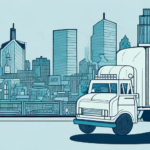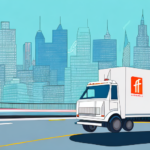Transforming Last Mile Delivery with Parcel Zone Skipping
Last mile delivery remains a critical challenge for e-commerce companies globally, primarily due to the high costs and time associated with the final leg of the delivery process. To mitigate these issues, companies are adopting various strategies, with parcel zone skipping standing out as a particularly effective technique. This approach is revolutionizing last mile delivery by significantly lowering costs, enhancing efficiency, and reducing the carbon footprint of delivery operations.
Understanding Parcel Zone Skipping
What is Parcel Zone Skipping?
Parcel zone skipping involves shipping a package directly from the nearest fulfillment center to the customer, bypassing local distribution centers. This method optimizes the last mile delivery process by reducing the number of handling points, thereby cutting costs and improving delivery speeds.
Advantages of Parcel Zone Skipping
- Faster Delivery Times: By eliminating intermediary distribution centers, packages reach their destinations more quickly, which is crucial for time-sensitive deliveries such as medical supplies or perishable goods.
- Cost Efficiency: Reduces expenses related to facilities and labor by minimizing the number of handling points.
- Enhanced Customer Satisfaction: Faster and more reliable deliveries improve the overall customer experience.
Benefits for Delivery Companies
Cost Savings
By bypassing local distribution centers, companies can significantly reduce their operational costs. According to a McKinsey report, optimizing last mile delivery can lead to cost reductions of up to 30%.
Improved Efficiency
Parcel zone skipping streamlines the delivery process, allowing for more efficient route planning and resource allocation. This efficiency not only lowers costs but also increases the capacity to handle higher volumes of deliveries.
Environmental Sustainability
Shorter shipping distances result in lower carbon emissions. A study by the Transport & Environment organization highlights that optimizing delivery routes can reduce greenhouse gas emissions by up to 20%.
Advantages for Consumers
Enhanced Delivery Speed
Consumers benefit from faster delivery times, making urgent purchases more feasible and improving overall satisfaction.
Reduced Shipping Costs
Lower operational costs can translate to reduced shipping fees for consumers, making online shopping more affordable.
Improved Delivery Flexibility
Parcel zone skipping allows for more flexible delivery options, including evening and weekend deliveries, which accommodate consumers' schedules better.
Environmental Impact
Reduced Carbon Footprint
Parcel zone skipping contributes to environmental sustainability by decreasing the carbon footprint of delivery operations. Shorter shipping distances and consolidated deliveries lead to lower greenhouse gas emissions.
Alleviating Urban Traffic Congestion
Fewer delivery vehicles on the road help reduce traffic congestion in urban areas. This not only lowers emissions but also improves the overall quality of life in densely populated regions.
Technological Innovations
Real-Time Tracking and Route Optimization
Advanced technologies such as real-time package tracking and route optimization software enhance the efficiency of parcel zone skipping by ensuring timely and accurate deliveries.
Emerging Delivery Technologies
Innovations like drones and autonomous vehicles hold the potential to further revolutionize last mile delivery. For instance, drones can deliver packages directly to customers' doorsteps, while autonomous vehicles can handle multiple deliveries simultaneously, reducing the need for human drivers.
Challenges and Considerations
Operational Complexity
Integrating parcel zone skipping with existing logistics processes can be complex. Seamless coordination between fulfillment centers and carriers is essential to ensure timely and accurate deliveries.
Technological Investments
Implementing parcel zone skipping requires significant investments in technology and infrastructure. Companies must assess these costs against the potential savings to determine feasibility.
Staff Training
Ensuring that personnel are adequately trained to manage new processes is crucial for the success of parcel zone skipping initiatives.
Future Outlook and Case Studies
Future of Last Mile Delivery
The future of last mile delivery is set to be transformed by the widespread adoption of parcel zone skipping. As e-commerce continues to grow, this technique will become increasingly integral to delivery strategies, driven by the need for faster, more cost-effective, and environmentally friendly solutions.
Case Studies of Successful Implementation
- Amazon: Leveraging an extensive network of fulfillment centers, Amazon ships items directly to customers, minimizing reliance on local distribution centers. [Source](https://www.aboutamazon.com/news/operations/amazon-innovations-in-last-mile-delivery)
- FedEx: FedEx utilizes parcel zone skipping to streamline delivery processes and enhance operational efficiency. [Source](https://www.fedex.com/en-us/about/innovation.html)
- UPS: UPS employs this technique to optimize delivery routes and reduce operational costs. [Source](https://www.ups.com/us/en/services/knowledge-center/article.page?kid=aa448)
- DHL: DHL integrates parcel zone skipping to improve delivery speeds and customer satisfaction. [Source](https://www.dhl.com/global-en/home/our-divisions/express.html)
Conclusion
Parcel zone skipping is a transformative strategy reshaping the last mile delivery landscape. To stay competitive in the dynamic e-commerce environment, companies must embrace innovative techniques like parcel zone skipping. This approach not only significantly reduces costs and delivery times but also contributes to environmental sustainability. By understanding the critical factors, addressing implementation challenges, and partnering with the right stakeholders, companies can fully harness the benefits of parcel zone skipping, positioning themselves for success in the evolving delivery ecosystem.






















